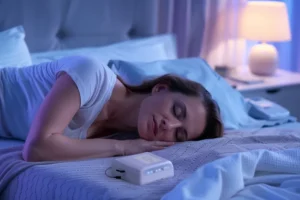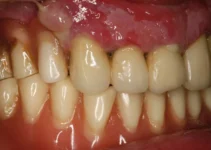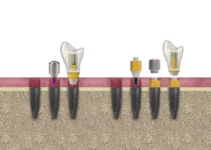Sleep apnea, often perceived as predominantly affecting men, manifests distinctively in women, necessitating awareness about unique symptoms. Unlike the loud snoring typically associated with the condition in males, women might experience subtler signs such as fatigue, mood changes, and insomnia. These symptoms can be misleading, often being attributed to stress or hormonal changes, thus delaying the diagnosis of sleep apnea. The impacts this has on women’s health underscores the importance of recognizing these symptoms, as timely intervention can significantly improve quality of life and prevent further complications.
Common Symptoms of Sleep Apnea in Women
Sleep apnea is a significant health issue that often goes undiagnosed, especially in women. The condition is characterized by repeated interruptions in breathing during sleep, which can lead to various health consequences. It is essential to recognize the symptoms to seek timely medical intervention. Women may experience symptoms that differ slightly from those commonly observed in men, making it crucial to understand the specific indicators.
Studies have shown that women are frequently misdiagnosed or underdiagnosed when it comes to sleep apnea. This is partly due to the fact that their symptoms can be more subtle or less classic. Typical manifestations include daytime fatigue, mood disturbances, and frequent headaches, among others. Recognizing these signs can lead to appropriate diagnosis and treatment, thereby improving overall health and quality of life.
Daytime Fatigue and Sleepiness
One of the most common symptoms of sleep apnea in women is daytime fatigue and excessive sleepiness. Interruptions in sleep result in poor quality rest, even if the individual believes they have slept for a sufficient number of hours. This continuous cycle of unrest can lead to chronic fatigue.
Women with sleep apnea often report feeling exhausted upon waking and struggle to stay alert during the day. They may feel an overwhelming need to nap, which can interfere with daily activities. This persistent tiredness can impact their productivity at work or school and hinder their ability to perform daily tasks efficiently.
Mood Disturbances
Mood disturbances are another common symptom of sleep apnea in women. The chronic sleep deprivation associated with this condition can lead to a range of emotional issues. These can include irritability, anxiety, and depression.
Hormonal fluctuations related to sleep disturbances can exacerbate these mood issues. Women may find themselves feeling unusually emotional or stressed without a clear reason. Recognizing these mood changes as potential symptoms of sleep apnea may prompt further investigation and diagnosis.
Frequent Headaches
Frequent headaches, especially in the morning, are also a common symptom of sleep apnea in women. These headaches are often the result of oxygen deprivation during sleep, which causes vasodilation and subsequent pain upon waking.
Women suffering from sleep apnea may experience headaches that are both severe and persistent. These headaches can be debilitating, making it difficult to start the day and maintain a regular schedule. It is important to note that morning headaches are a key indicator that should not be overlooked when diagnosing sleep apnea. Understanding these common symptoms can assist in recognizing sleep apnea early. If you found this article useful, consider exploring our other articles related to sleep health and well-being.
Diagnosis of Sleep Apnea in Women
Understanding Sleep Apnea
Sleep apnea is a serious sleep disorder that occurs when a person’s breathing is interrupted during sleep. People with untreated sleep apnea stop breathing repeatedly during their sleep, sometimes hundreds of times. This means the brain—and the rest of the body—may not get enough oxygen. There are two main types of sleep apnea: obstructive sleep apnea (OSA), the more common form that occurs when throat muscles relax; and central sleep apnea (CSA), which occurs when the brain doesn’t send proper signals to the muscles that control breathing.
Symptoms More Common in Women
Sleep apnea is often underdiagnosed in women because the symptoms can be subtler compared to men. While men typically present with loud snoring and noticeable pauses in breathing, women might experience less obvious symptoms such as:
- Insomnia or difficulty staying asleep
- Restless legs
- Night sweats
- Mood disturbances, including anxiety and depression
- Morning headaches
Additionally, women might notice daytime fatigue, irritability, and even dry mouth or sore throat upon waking up. These varied symptoms can make it challenging for healthcare providers to accurately diagnose sleep apnea in women. Recognizing these differences is crucial for proper diagnosis and treatment.
Diagnostic Tools and Approaches
Diagnosing sleep apnea involves a comprehensive approach that includes both subjective assessments and objective measurements. The primary diagnostic tools include:
- Polysomnography (PSG): Often referred to as a sleep study, PSG is the gold standard for diagnosing sleep apnea. It records brain waves, blood oxygen level, heart rate, breathing, and eye and leg movements during sleep.
- Home Sleep Tests (HST): These tests can be an alternative to PSG for patients who are unable or unwilling to undergo an in-lab sleep study. HSTs measure fewer parameters but can still provide critical information about sleep apnea severity.
- Questionnaires and Screening Tools: Tools such as the Epworth Sleepiness Scale (ESS), the STOP-Bang questionnaire, and the Berlin Questionnaire can help identify the likelihood of sleep apnea and guide the need for further testing.
Healthcare providers may also perform a detailed review of the patient’s medical history and conduct a physical examination to look for potential anatomical contributors to airway obstruction.
In conclusion, understanding the unique presentation of sleep apnea in women and utilizing appropriate diagnostic tools can significantly improve recognition and management of this condition. Accurate diagnosis is the first step towards effective treatment, which can improve quality of life and reduce the risk of associated health issues.
To delve deeper into topics related to sleep disorders and their management, be sure to explore our other articles.
Risk Factors for Sleep Apnea in Women
Sleep apnea is a serious sleep disorder that affects a significant portion of the population, including a substantial number of women. Identifying risk factors specific to women is crucial for effective diagnosis and treatment. Two primary factors that contribute to the development of sleep apnea in women are obesity and weight gain, and hormonal changes.
Obesity and Weight Gain
Obesity is a well-known risk factor for sleep apnea in both men and women. However, women tend to accumulate fat differently, with a higher propensity for fat distribution around the neck and throat, which can exacerbate airway obstruction during sleep. Weight gain further increases this risk, as excess fat tissue can cause the airways to become narrower and more collapsible.
A study published in the American Journal of Respiratory and Critical Care Medicine found that weight gain of just 10% could lead to a six-fold increase in the odds of developing moderate-to-severe sleep apnea. Therefore, maintaining a healthy weight is critical in mitigating this risk. Women should be aware of the implications of weight changes and incorporate regular physical activity and a balanced diet into their lifestyles.
Moreover, women are often less likely than men to be diagnosed with sleep apnea, partly because their symptoms can be less pronounced or different. While men might experience loud snoring and obvious pauses in breathing, women may report symptoms such as insomnia, headaches, and mood disturbances. This underscores the importance of recognizing gender-specific manifestations of sleep apnea.
Hormonal Changes
Hormonal fluctuations play a significant role in the occurrence of sleep apnea among women. During pregnancy, weight gain and hormonal changes can both contribute to the narrowing of the airways. Similarly, menopause can bring about changes in the body’s hormone levels, particularly a decrease in progesterone, which has a protective effect on the airway muscles. Research indicates that postmenopausal women are two to three times more likely to develop sleep apnea compared to premenopausal women. This increase is largely attributable to the reduction in estrogen and progesterone levels, which help maintain muscle tone around the airway. Hormonal replacement therapy (HRT) has been shown to reduce the incidence of sleep apnea in postmenopausal women, providing a potential avenue for treatment.
Additionally, polycystic ovary syndrome (PCOS), which affects a significant number of women of reproductive age, has been linked to a higher risk of sleep apnea. PCOS is associated with obesity, insulin resistance, and elevated testosterone levels, all of which can contribute to the condition.
Understanding these hormonal influences is vital, as it enables healthcare providers to tailor interventions that address the unique needs of women with sleep apnea. By recognizing and managing these risk factors, the incidence and severity of sleep apnea can be significantly reduced.
Common Questions About Sleep Apnea Symptoms in Women
Understanding how sleep apnea manifests uniquely in women can lead to better diagnosis and treatment considerations. Here are some frequently asked questions about sleep apnea symptoms in women.
What are the typical symptoms of sleep apnea in women?
While symptoms such as loud snoring and excessive daytime sleepiness are common in both men and women, sleep apnea in women may also present with less typical symptoms. These include fatigue, insomnia, depression, anxiety, and even symptoms similar to fibromyalgia. Women with sleep apnea might also experience frequent awakenings at night, a sense of restlessness, and headaches in the morning.
How does sleep apnea in women differ from sleep apnea in men?
Women with sleep apnea often experience more subtle and atypical symptoms compared to men, making diagnosis more challenging. Men are more likely to report snoring and cessation of breathing during the night, whereas women often report a wider range of symptoms such as insomnia, headaches, and mood disturbances. Additionally, hormonal fluctuations and menopause can influence the severity and presentation of sleep apnea in women, further distinguishing the condition from that in men.

My name is Salman Kapa, a 73-year-old expert in bone regeneration and dental implantology. With decades of experience in the field, I am dedicated to advancing our understanding of oral health and hygiene. Through my research and writing, I aim to contribute to the development of innovative solutions in dental care.




